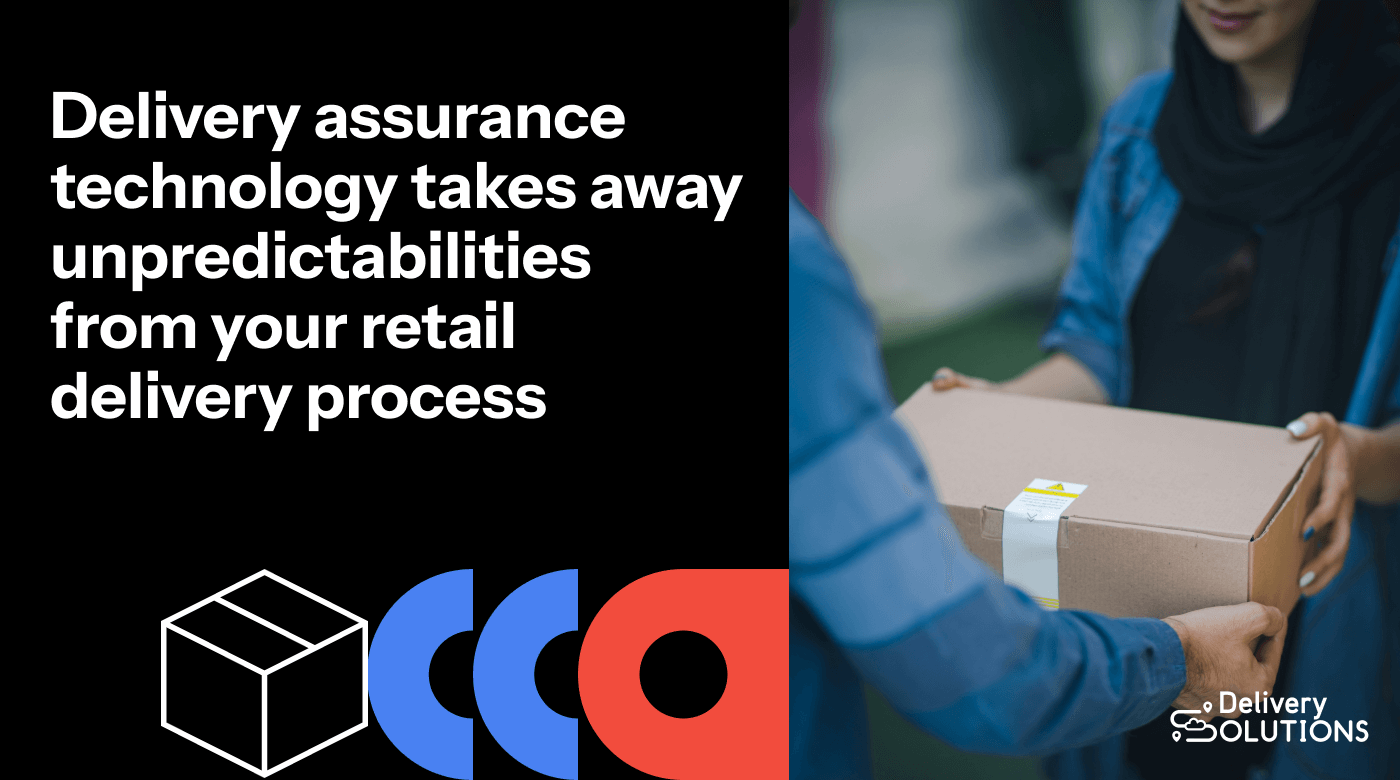“I placed my order two days ago but still haven’t received it.”
“I was out grocery shopping and missed the courier’s doorbell. Now my package is MIA!”
As a business owner, you’ve likely heard these complaints. Naturally, this is quite frustrating for both you and your customers.
The bad news? These complaints aren’t diminishing anytime soon. More than 41% of customers expect to get their parcels within 24 hours, according to a recent survey.
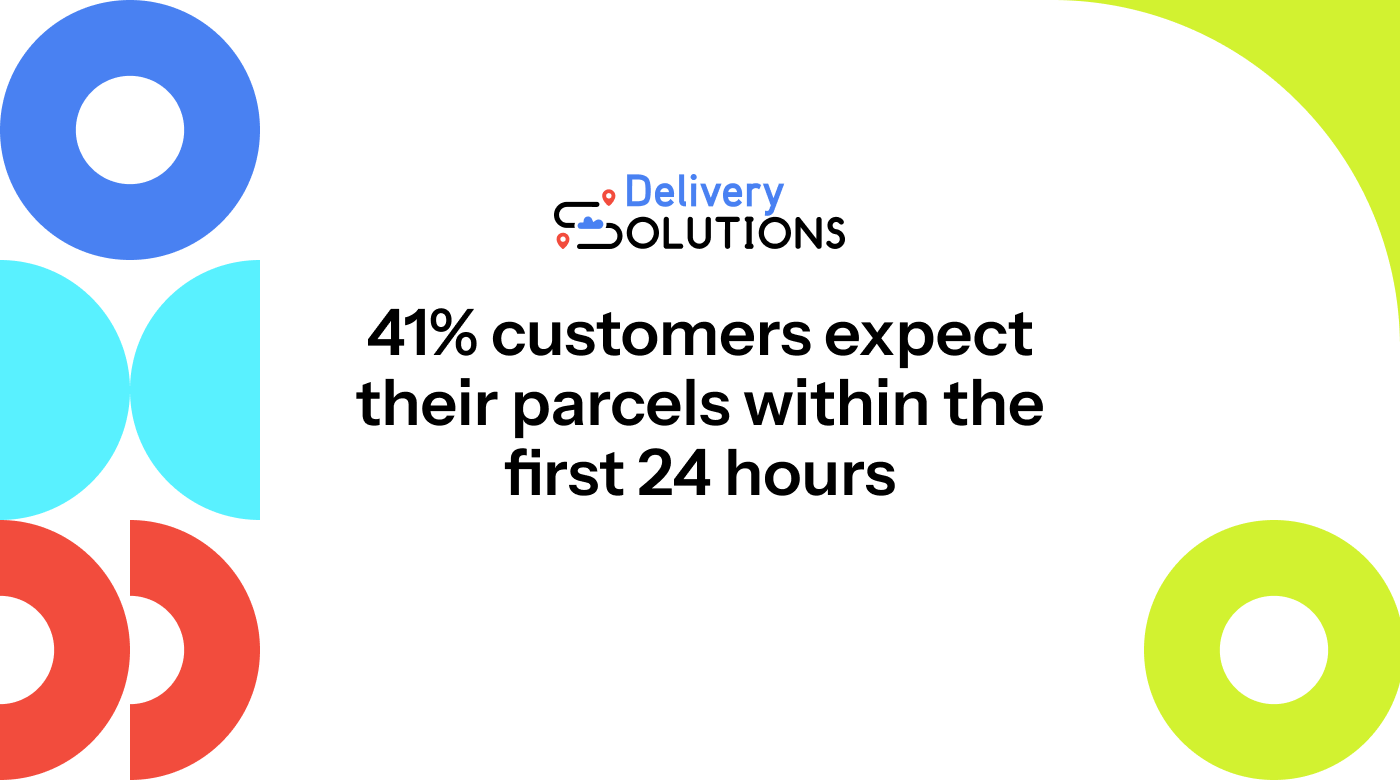
Late deliveries hurt customers’ trust, incur return costs, and damage your business’s credibility.
And it doesn’t end here. Package thefts, difficulty meeting growing demand, and scaling your coverage areas are all common challenges to retailers worldwide.
So, how do you overcome the hurdles associated with unpredictable deliveries? The answer lies in having a strong retail delivery assurance mechanism in place.
Before we explore the workings of delivery assurance technology, let’s look at some of the prevalent hurdles for businesses in the e-commerce industry.
Challenges businesses face in the e-commerce sector
Online shopping surged greatly during the COVID-19 pandemic. With social distancing measures in place, customers turned to e-shopping for nearly all their household needs. These include grocery items, food delivery, medicines, home appliances, and clothing purchases.
Therefore, millions of company owners had to respond to this drastic demand surge to survive. Businesses switched their focus from in-store sales to doorstep delivery.
They also needed to be really particular about delivering their products in a safe and timely manner. This is because 24% of customers abandon their carts if the delivery date doesn’t match their preferred date.
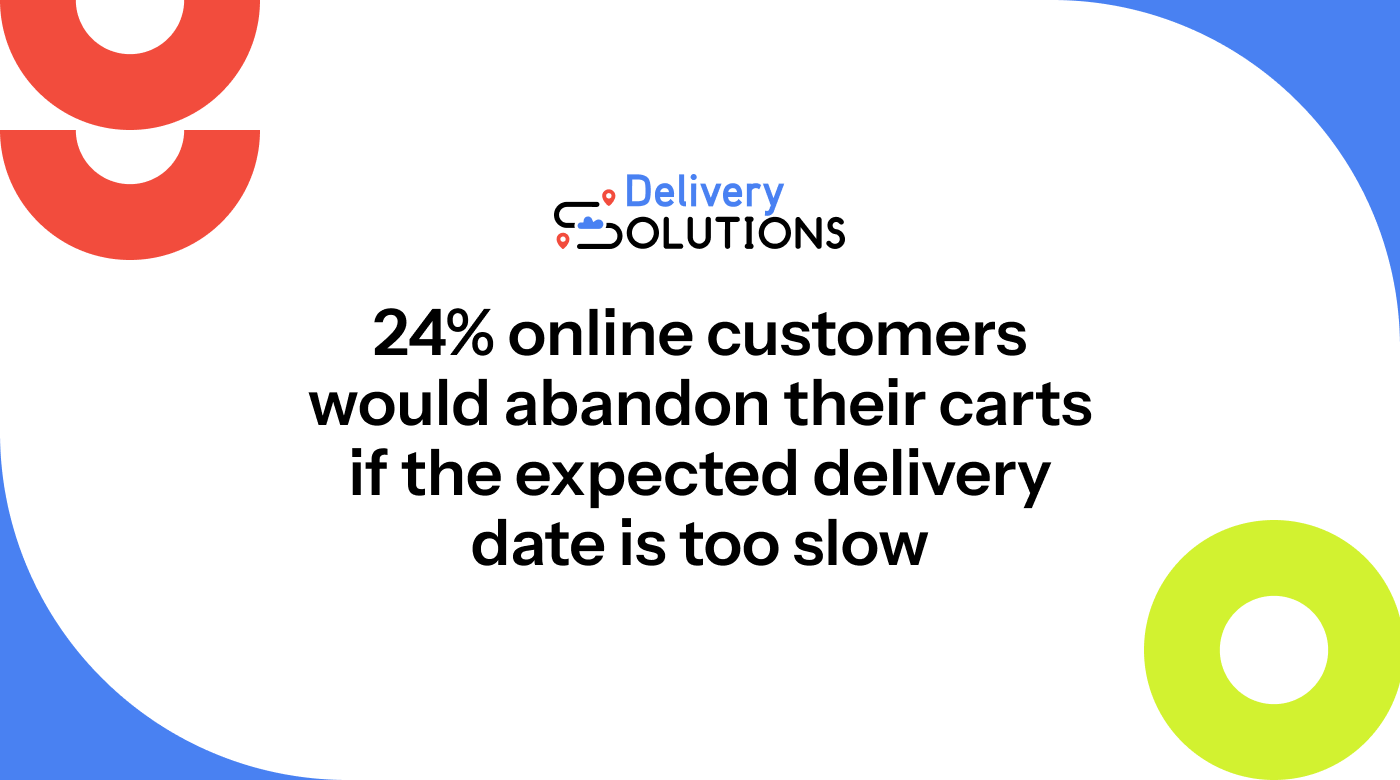
Lost packages are another challenge that can occur at any delivery stage. However, they are more likely to be misplaced if you can’t access their location during the transit phase.
Moreover, lost packages trouble businesses due to inconsistent service coverage when expanding. Geofencing protocols rely on GPS to set geographical boundaries. When mapping areas for delivery, you should utilize this technology for seamless deliveries.
Failure to define your service areas results in coverage gaps and an inability to deliver items. This is because certain areas would fall out of your defined boundaries.
Besides, you’d encounter logistical delays and inventory mismanagement as your supply chain struggles to adapt to the expanded service region. With service delays and operational inefficiencies, your running costs will rise significantly.
Similarly, item thefts often happen in the final mile, from the warehouse to your customer. These thefts incur a massive financial loss for both retail companies and end users. In the US alone, over $19.5 billion worth of packages were stolen in 2023.
Lastly, service delays happen if you don’t have access to quality data analysis tools to predict delivery risks accurately. These risks include weather disruptions, service bottlenecks, inventory shortages, traffic congestion, and road closures during the delivery route.
Failure to account for these risks will give inaccurate ETAs, leading to increased customer frustration. Besides, it’ll endanger the safety of your personnel and packages, especially in case of a weather calamity.
What is delivery assurance
Delivery assurance technology checks if an area is within your coverage region. It’s essentially an API that integrates with your e-commerce platform.
When a customer places an order on your website, their request is forwarded to your system. This service request contains information about the precise drop-off address, required products, and preferred pickup and delivery time.
This data is then processed by the delivery assurance API, which checks whether the delivery address falls within your coverage area. You can easily define your coverage areas in the admin settings by specifying cities, states, and postal codes where you’d like to deliver.
Once checked, the API produces a list of nearby stores that could deliver to the customer.
Based on user input, it also computes the estimated delivery time and a risk score, indicating the potential challenges you might encounter while delivering to that particular location.
For instance, if a location has a history of being prone to traffic jams during certain hours, the risk score would reflect this delay.
Once the API has produced this information, the final stage is data presentation, in which the estimated delivery time and cost are displayed to the customer.
As this time is calculated after assessing all factors, it accurately represents the delivery time. Therefore, your customers will be aware of any potential delays beforehand instead of finding out later.
Features of retail delivery assurance technology
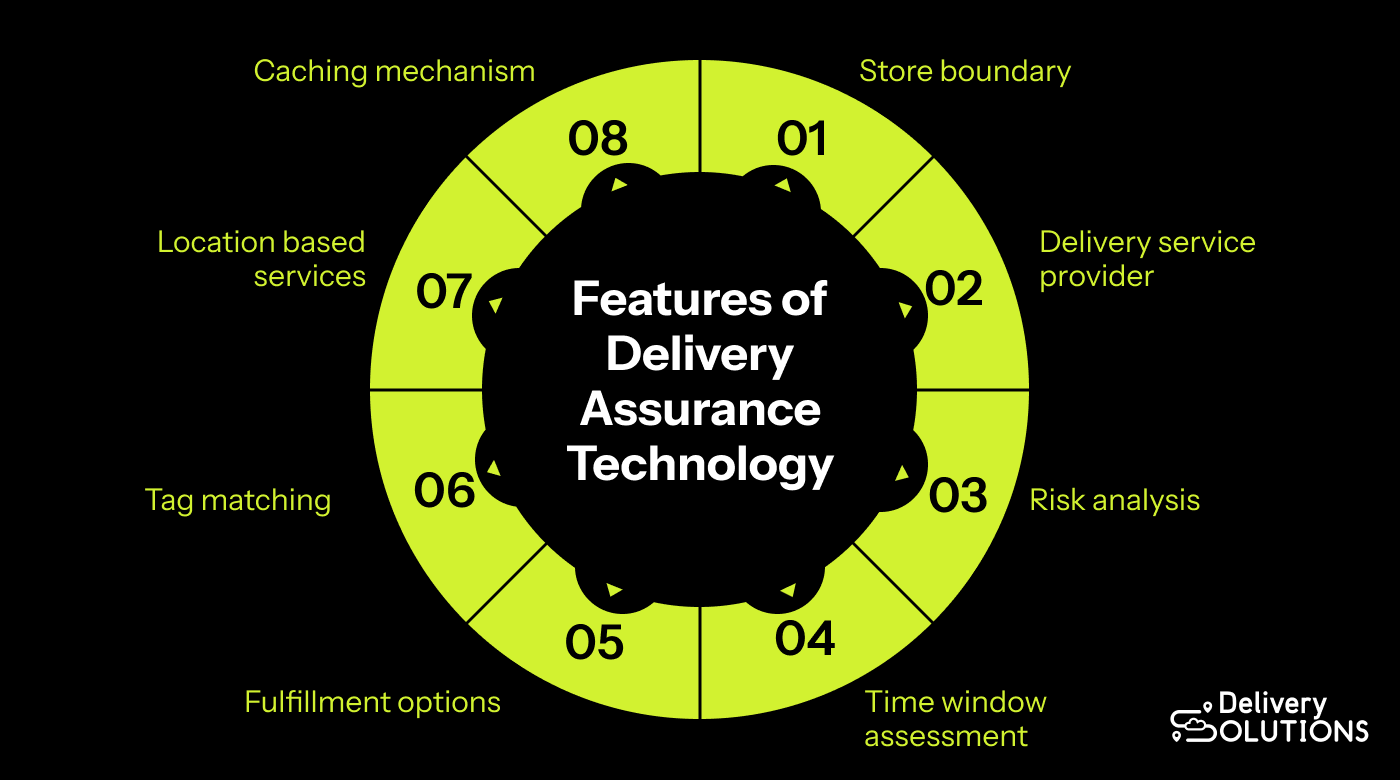
1. Store boundary
Once a service request is made by a customer, the store boundary feature checks whether the delivery address falls within the boundaries of your stores. It then returns a list of all the stores that it could deliver to the buyer’s address.
The delivery assurance technology checks latitude and longitude, radius, and zip codes to define each store's eligible coverage areas.
2. Delivery Service Provider (DSP)
Retailers that don’t deliver their items directly use the services of “providers.” These are delivery companies, logistics partners, or a courier service such as DoorDash.
As these providers are already integrated into your network, the DSP checks which partner can cover the delivery area.
3. Risk score
The risk score uses predictive technology to gauge the risk of delivery to a particular location. It requires the customers’ full address, including zip code, which is then geocoded into exact geographical coordinates. A numerical risk score is calculated based on this location, historical data, and real-time conditions.
4. AI and ML capability
The delivery time estimates aren’t random guesses. Delivery assurance uses predictive Artificial Intelligence and Machine learning technology to give your customers specific delivery details.
It intelligently displays an accurate delivery time by analyzing historical trends, provider performance, drop-off address, and vehicle route. Similarly, you can efficiently specify your delivery coverage areas with Smart Boundaries.
It will analyze local legal restrictions, customer behavior, proximity, and traffic routes to gauge which areas suit you.
5. Time window assessment
The time window assessment checks if delivery providers are available during the specified pickup and delivery times.
Retailers usually set these times themselves. Sometimes, customers can also specify the preferred days or time windows in which they’d like the item delivered.
If the pickup or dropoff time isn’t specified, the system defaults to an appropriate time window.
6. Tag matching
Tag matching ensures accuracy when picking stores and providers. It matches the delivery with stores or providers with specific tags, like service types or specialties.
For example, if a customer requests a service associated with a particular tag, e.g., “express delivery” or “fragile items,” tag matching would ensure only those stores or providers with this particular expertise are selected for delivery.
7. Caching mechanism
During peak traffic, your website may become unresponsive, making the user experience quite frustrating.
To address this, delivery assurance contains a caching mechanism, which temporarily stores frequently accessed data. This removes the need for processing data each time a customer makes a transaction.
To understand this better, consider a popular online electronics store running a limited-time sale for its flagship smartphone. Many people would be interested in knowing its delivery time.
Instead of repeatedly processing new queries, the caching mechanism stores key information such as coverage areas and available providers.
By tapping into and presenting this already-stored data, the system wouldn’t experience network delays.
Benefits of delivery assurance technology
1. Optimized operations and faster deliveries
To run a successful e-commerce business, your operations should be without disruptions, from when a customer visits your website to final delivery.
Delivery assurance capability eliminates many uncertainties in the delivery process. Geofencing protocols, for example, ensure that deliveries are confined to the right areas, preventing your resources from going to waste.
2. Reduced missed deliveries
Missed deliveries, which make up 8% of total deliveries globally, cost retailers an average of $17 per incident, an annual loss of over $197,730. Besides the financial cost, your brand’s perception takes a significant hit.
In a time when customers are quite vocal, one negative review on social media can damage your credibility and trustworthiness.
Delivery assurance minimizes these risks, especially in the last mile, which is most prone to misplacements. By assessing delivery challenges, and provider capabilities, you can ensure on-time deliveries.
3. Greater customer trust
Customers appreciate transparency and being kept in the loop regarding their order status. The estimated arrival time (ETA) should be accurate so your buyers can plan their activities accordingly. It’s frustrating to find out about late deliveries at the last moment.
With risk analysis in place, the displayed delivery time would be a realistic estimate that’s factored in all possible causes of delay. These include weather calamities, traffic jams, and high processing times.
You can even configure SMS and email notifications for more proactive communication. In this way, your customers will be alerted when their item has left the warehouse, picked up by the delivery provider, or is in the final mile.
4. Competitive edge
Delivery assurance technology is quite straightforward to integrate with your e-commerce platform. This integration unlocks multiple order management, and customer care capabilities, giving you a strong competitive advantage.
Features such as customizable marketing messages, curbside notifications, BOPA lockers, and multi-SKU returns make your brand experience technology-driven and incomparable to others.
5. Data-focused approach
With Smart Boundaries, you can define customizable boundaries for the regions you want to cover. The delivery assurance technology analyzes regional factors that could impact your operations. This helps you identify areas with low delivery risks and a greater demand for your product.
This data-centric approach will ensure you tap into optimal markets, positioning your business for long-term success. You'll also save precious time and resources that’d otherwise be spent manually analyzing multiple regions.
Create a seamless delivery experience with Delivery Solutions
Enter Delivery Solutions, a comprehensive retail solution that handles all e-commerce operations for you — delivery assurance, post-purchase, advanced analytics, contract management and order management. By incorporating it, you'll easily identify bottlenecks in your retail operations and make them more efficient.
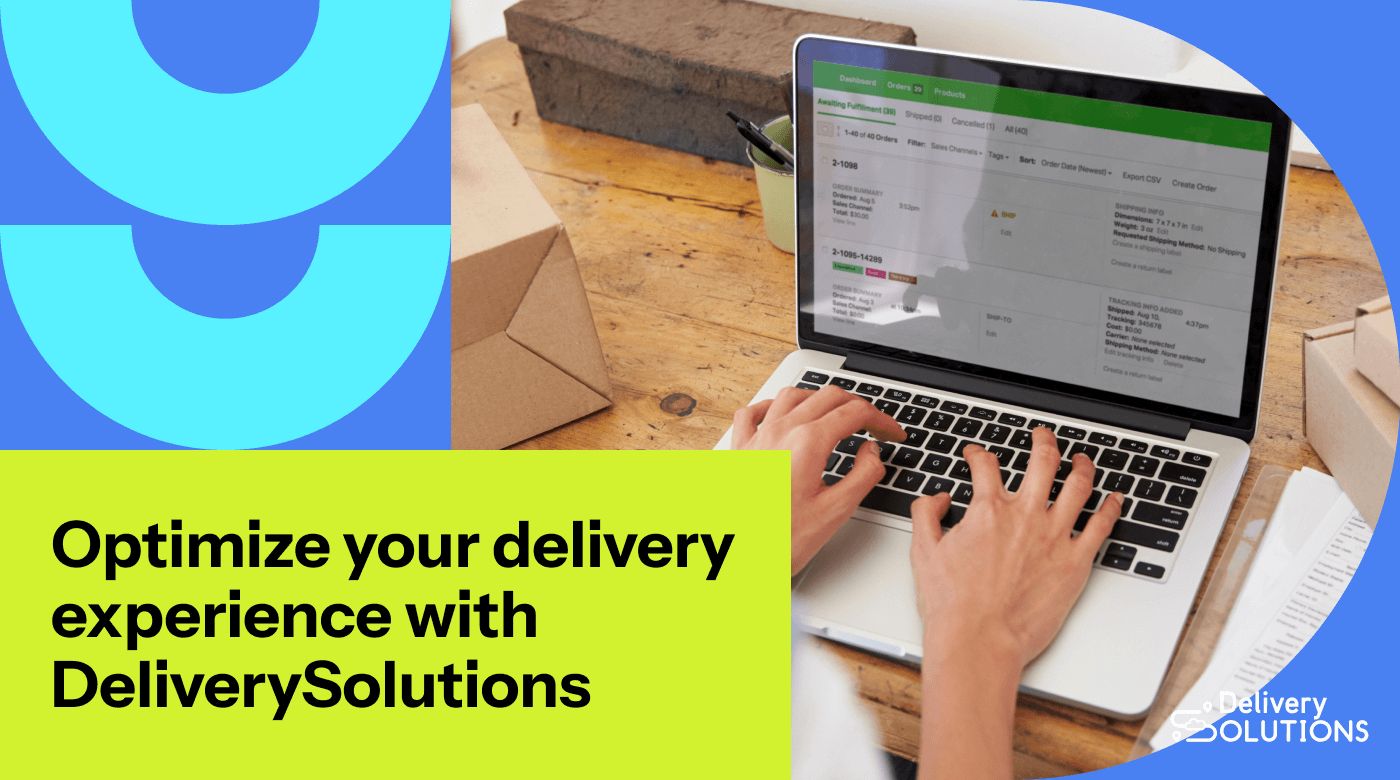
In addition to delivery assurance, here's what Delivery Solutions offers:
- Curbside Pickup: 47.5% of the top 500 retail chains offer curbside pickup. This option allows customers to pick items from your store from the convenience of their vehicle, without having to navigate multiple aisles. Moreover, with geofencing and automated alerts, your store employees will be immediately alerted when customers are nearby. With this convenience, their waiting time would be reduced to more seconds.
- Lockers: One of the most common apprehensions when ordering online is worrying about porch pirates. With Buy Online, Pickup Anywhere (BOPA) lockers, your customers can have their items delivered to any secure location.
To summarize, the importance of delivery assurance can’t be understated. Without an effective mechanism, you’ll be faced with the challenges of missed items, eroding customer trust, and risk to reputation.
By implementing delivery assurance, you position your business as a trustworthy and reliable player in the market.
Book a free demo with DeliverySolutions to learn how to create an unparalleled retail experience.
Ryan Caldarone
Ryan is a Sr. Digital Marketing Manager with over ten years of experience in B2B eCommerce, specializing in brand storytelling and content. Having contributed to hundreds of creative projects for SMBs and startups across the tech, energy, and fine arts sectors, Ryan brings diverse perspectives.
